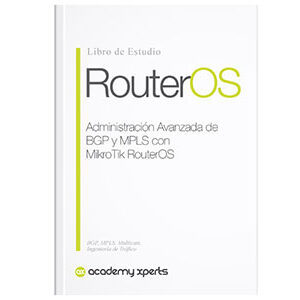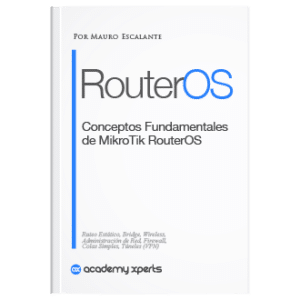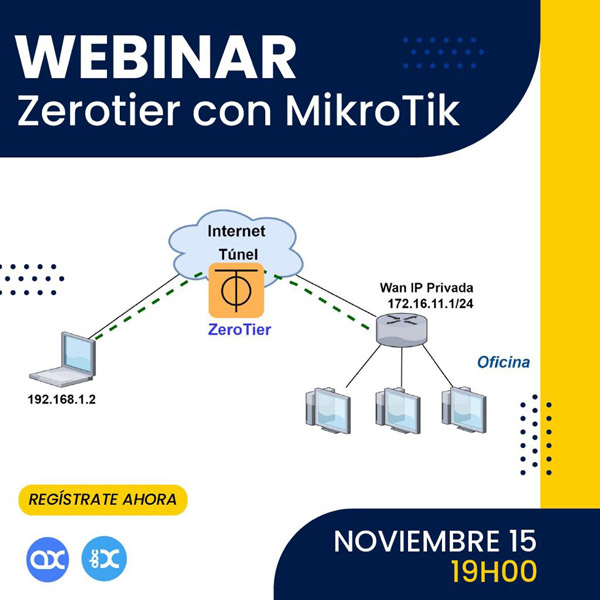NAT and the transition to IPv6: Will NAT still be relevant in the future?
- Mauro Escalante
- No comments
- Share this article
Network Address Translation (NAT) has been an important bulwark in Internet infrastructure for many years. But, with the dawn of the IPv6 era, an unavoidable question arises: Will NAT still be relevant in the future?
At the end of the article you will find a small test that will allow you assess the knowledge acquired in this reading
To answer this, let's remember that NAT is a routing technique that has allowed computer systems to share a single IP address, thus extending the useful life of IPv4. However, with the advent of IPv6, which offers a virtually unlimited number of IP addresses, some might question the relevance of NAT.
On the other hand, NAT offers more than just expansion of IP addresses. It also provides an additional layer of security by hiding internal IP addresses.
Could its security function then be a key factor in its continued relevance? That's a possibility. However, IPv6 also incorporates intrinsic security features, such as IPsec, which could offset the security feature of NAT.
IPv6 adoption
Although IPv6 promises an ocean of IP addresses, its adoption has been relatively slow. Therefore, until IPv6 is fully implemented, NAT will continue to be relevant, given its ability to preserve IPv4 addresses.
The existence of transition and coexistence mechanisms between IPv4 and IPv6, such as Dual Stack y NAT64, indicate that NAT will continue to be useful, at least in the short and medium term.
Will NAT disappear?
But even after full implementation of IPv6, NAT may not go away completely. It could evolve and remain useful in particular scenarios, such as internal corporate networks, where assigning a unique IP address to each device may not be necessary or desired.
The shift to IPv6 depends not only on the availability of IP addresses, but also on the ability of Internet service providers, businesses and users to change their infrastructure and adapt to the new technology. This reality could mean that NAT will remain relevant for longer than many expect.
Dual Stack y NAT64 are two techniques used to facilitate the transition from IPv4 to IPv6 on the Internet network. Although both techniques have the same general goal, they operate quite differently. Let's delve into each of them to understand how they work.
Dual Stack
The Dual Stack approach allows devices and networks to handle both IPv4 and IPv6 addresses at the same time. This means that operating systems and network devices (such as routers) maintain two protocol stacks, one for IPv4 and one for IPv6, and can switch between them as necessary.
For example, if you are trying to access a website that is only available in IPv4, your device will use its IPv4 protocol stack. But, if you are trying to access a website that is available in IPv6, it will use its IPv6 protocol stack.
One of the advantages of Dual Stack is that it allows a smooth and gradual transition to IPv6, since devices and networks can continue using IPv4 while they adapt to IPv6.
Advantages
- Smooth Transition- Dual Stack allows devices and networks to handle both IPv4 and IPv6 addresses, allowing for a smooth and gradual transition to IPv6.
- Compatibility: It can interact with both IPv4 and IPv6 hosts, making it extremely compatible.
- No translation needed: Unlike NAT64, Dual Stack does not require IP address translation, avoiding performance and compatibility issues that may arise during the translation process.
Disadvantages
- Use of resources: When maintaining two protocol stacks, devices need more memory space for addresses and more processing power to handle both stacks.
- Management: Requires the administration of two separate address spaces, which can complicate network management.
NAT64
NAT64 is a transition technique that allows IPv6 devices to communicate with IPv4 devices. It does this by translating IPv6 addresses into IPv4 addresses and vice versa.
NAT64 is primarily used in networks that have already adopted IPv6 but need to maintain connectivity with resources that are still on IPv4.
It works in combination with a mechanism called DNS64. When an IPv6 host attempts to communicate with an IPv4 host, the DNS query is directed to a DNS64 server. This DNS server returns an IPv6 address synthesized from the IPv4 address of the destination. The IPv6 device then sends its traffic to this synthesized address and the NAT64 gateway translates this IPv6 traffic to IPv4 for the final destination.
Although NAT64 is effective in maintaining compatibility between IPv4 and IPv6, it has certain limitations. For example, there may be problems with applications that embed IP addresses in the contents of packets, as the translation process may disrupt communication.
Advantages
- Preserving IPv4 addresses: By translating IPv6 addresses to IPv4 addresses, NAT64 allows IPv6 networks to communicate with IPv4 networks, preserving the IPv4 addresses.
- Less resource use: Unlike Dual Stack, NAT64 only needs to maintain one IPv6 protocol stack, which can reduce resource usage.
Disadvantages
- Traducción: NAT64 requires translation of IP addresses, which can create performance and compatibility issues. Additionally, applications that embed IP addresses in the packet content may experience communication problems.
- DNS64 dependency: NAT64 needs to work in combination with DNS64 to create synthetic IPv6 addresses, which adds an additional layer of complexity.
- Problems with non-translatable protocols: Not all protocols are easily translatable between IPv4 and IPv6. This can cause interoperability issues in some circumstances.
Table summarizing the differences between Dual Stack and NAT64
| Features | Dual Stack | NAT64 |
|---|---|---|
| IP addresses | Uses both IPv4 and IPv6 addresses | Translate IPv6 addresses to IPv4 and vice versa |
| Protocols | Maintains two protocol stacks | Use a translation mechanism to communicate |
| DNS | Use standard DNS | Requires DNS64 to create synthetic IPv6 addresses |
| Compatibility | Compatible with IPv4 and IPv6 networks | Allows IPv6 networks to communicate with IPv4 networks |
| Transition | Facilitates the gradual transition to IPv6 | Used in networks that have adopted IPv6 but require IPv4 |
| Use of resources | Requires more memory space for addresses | Uses fewer resources since only IPv6 addresses are needed |
| Application problems | Less chance of problems with applications | There may be problems with applications that embed IP addresses |
| Security | Security based on each protocol stack | Security based on translation and synthesized IPv6 address |
Table summarizing advantages and disadvantages of Dual Stack and NAT64
| Appearance | Dual Stack | NAT64 |
|---|---|---|
| Advantages | 1. Smooth transition to IPv6 | 1. Preserve IPv4 addresses |
| 2. High compatibility | 2. Less resource usage | |
| 3. No need for address translation | ||
| Disadvantages | 1. Increased resource usage | 1. Need address translation |
| 2. Management of two address spaces | 2. DNS64 dependency | |
| 3. Problems with non-translatable protocols |
It is important to note that the choice between Dual Stack and NAT64 will depend on several factors, such as the current state of your network infrastructure, available resources, and your IPv6 transition plans.
Botton line
NAT has played a critical role in extending the life of IPv4. And although the transition to IPv6 is underway, the slow adoption and security features that NAT offers could prolong its relevance. So, as we move towards the future of IPv6, it would not be surprising if NAT continues to be a relevant player in the Internet scene.













